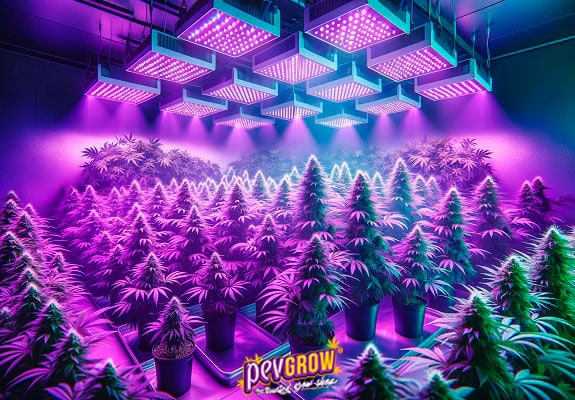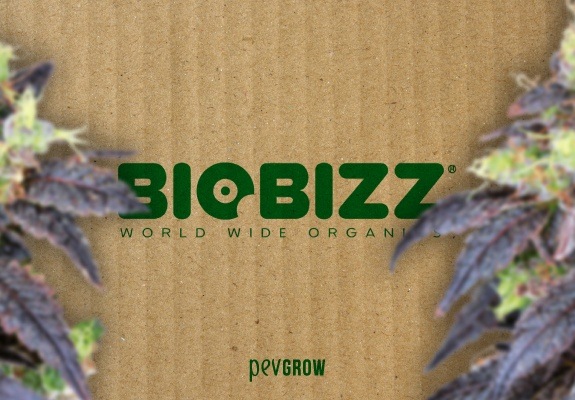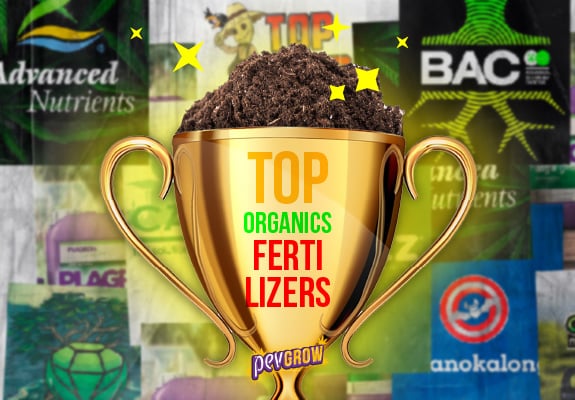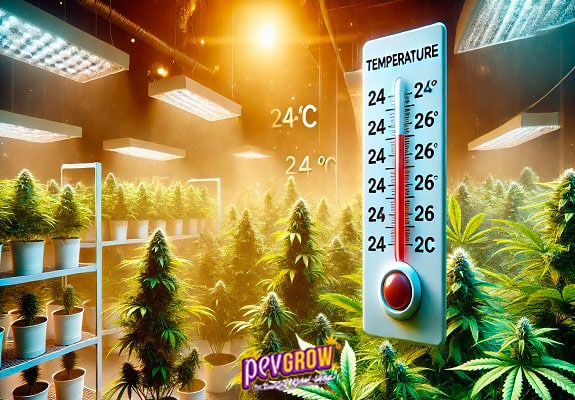

05-02-2024 08:00:00 - Updated: 5 February, 2024
Indoor growing with LED lighting has become a revolutionary technique in the world of cannabis. This method of cultivation, which began to gain popularity in the last decade, has transformed the way growers approach the growth process of their plants. Thanks to LED grow lights, growers can now enjoy greater control over growth conditions, optimizing the quality and quantity of their harvests. With their low energy consumption and efficient light production, indoor LED cultivation is not only a sustainable option but also highly effective. If you’re interested in this type of indoor grow lighting, be sure to check out this blog article discussing the best LEDs for marijuana.
How to Grow with LEDs
Growing with LED lights (Light Emitting Diodes) involves using this advanced technology to provide cannabis plants with the necessary light for their growth and flowering. Unlike traditional HID (High-Intensity Discharge) lights, LEDs are more energy-efficient, generate less heat, and can be adjusted to emit specific light spectra that benefit different stages of the plant’s life cycle.
Advantages and Benefits of Growing with LEDs
- Energy Efficiency: LEDs consume significantly less electricity than traditional lighting options, resulting in considerable savings on the electricity bill.
- Lower Heat Emission: LEDs generate less heat, reducing the need for additional cooling systems and decreasing the risk of overheating the plants.
- Adjustable Light Spectrum: LEDs allow for the adjustment of light spectra according to the plant’s needs, which can improve quality and enhance the production of cannabinoids and terpenes.
- Long Durability: LED lights have a longer lifespan compared to traditional options, meaning fewer replacements and maintenance.
- Reduced Environmental Impact: By consuming less energy and having a longer lifespan, LEDs are a more sustainable and environmentally friendly option.
Indoor LED Growing Step by Step
Indoor cannabis growing with LED lights involves a series of specific steps that differ from traditional methods with HPS or other lights. Here is a step-by-step overview for growing with LEDs, highlighting the key differences with other lighting methods:
- Selection of Suitable LED Lights: Choose LED lights with the right spectrum for the growth and flowering phases of your plants. There are lights that have an ideal spectrum for vegetative growth, and others perfect for flowering, but nowadays most new models on the market offer a spectrum that serves both the growth phase and the flowering phase.
- Setting Up the Grow Space: Make sure your grow space has adequate ventilation and is free of obstacles to light. With these lights, it is not necessary to install a reflector, and in some cases, they can be fixed at the top of the cabinet. Although LED grow lights hardly generate heat, it is essential to facilitate good ventilation of the grow cabinet, and the use of anti-odor carbon filters is essential.
- Planting and Germination: Plant your seeds and use a more bluish LED light spectrum to promote seedling growth if your light is adjustable in this regard. For the rest of the LED lights, during these phases, it is advisable to increase the distance from the light until the plants are bigger.
- Vegetative Phase: Use a light spectrum with more blue and white during the vegetative phase if your fixture can do so, and adjust the intensity according to plant growth. Once the plants already have large leaves, you can increase the power or intensity of the light, as well as bring the light closer to about 40 cm approximately.
- Flowering Phase: Switch to a spectrum with more red to stimulate flowering if your light allows it, adjusting the height and intensity of the lights as necessary, and if possible add UV light to increase resin and essential oil production. In flowering, the light can be brought closer to 20 or 30 cm, and it is not a bad idea to check the depth of the light to do a lower pruning and eliminate branches that do not receive enough light.
- Watering and Nutrition: Monitor the soil moisture carefully and adjust watering and nutrition according to the plant’s needs. Keep in mind that when growing with LEDs, it is possible to space out watering since they produce almost no heat, and plants transpire less. That does not mean they can assimilate less food, because creating a spectrum very similar to the sun and high luminous power, plants are capable of assimilating quite a bit of food.
- Harvest: Carefully observe the development of the trichomes to determine the best time to harvest. If you can adjust the light spectrum, in this phase you can combine red with blue and white, in addition to UV light. In this phase, the fact that LEDs barely increase the temperature is very beneficial because lowering several degrees during the last days of the plant’s life can be very good for them.
LED Grow Light Yield
When it comes to cannabis cultivation with LED lighting, one of the main concerns for growers is yield: How do LED lights affect the yield and quality of the buds? Below, we explore how growing with LEDs influences cannabis production.
Improved Efficiency and Quality
The use of LED lights for indoor cannabis cultivation offers several advantages that can positively influence production:
- Optimized Light Spectrum: LEDs allow manipulation of the light spectrum, which can optimize the photosynthesis process and promote healthier and more vigorous plant growth.
- Less Heat Stress: LED lights generate less heat compared to HPS, reducing thermal stress on plants. This can result in more robust growth and improved bud development.
- Trichome and Terpene Development: The ability to adjust the light spectrum with LEDs can enhance trichome production and terpene development, which in turn can increase potency and improve the aromatic profile of the buds.
Comparison with HPS in Terms of Yield
Although HPS lights have been the traditional choice for indoor cultivation due to their light intensity, LEDs are gaining ground thanks to their efficiency and effectiveness:
- Yield per Watt: LEDs are generally more efficient than HPS in terms of yield per watt of electricity consumed. Until the advent of LED grow lights, the gram/watt barrier was always taken into account because if the lights consumed 400w, the challenge was to achieve 400 grams dry, which was not easy by any means. However, LEDs can produce up to 2 grams per watt consumed, an unthinkable yield a few years ago.
- Bud Quality: Many growers report that buds grown under LEDs have superior quality, with better flavor and aroma, and this is precisely due to the light spectrum so similar to the natural one produced by the sun, which causes the plants to generate more, larger trichomes, with more essential oils, which also contain more cannabinoids, terpenes, and other aromatic compounds.
Considerations to Maximize LED Yield
To achieve the best results in production with LED lights, consider the following:
- Initial Investment: LEDs usually require a higher initial investment, but their efficiency and longer lifespan can offset this cost in the long run. With the price that the kilowatt of electricity is reaching, it could be said that in 2 or 3 crops you can recover the investment of the light thanks to the savings on the electricity bill.
- Proper Crop Management: Make sure to optimize other factors of the crop, such as substrate, nutrients, watering, and environmental conditions, to get the most out of your LED lights.
LED Grow Light Consumption
Energy consumption is a crucial aspect when choosing lighting for cannabis cultivation. LED lights have stood out for their energy efficiency compared to other lighting technologies such as HPS, LEC, HM, or CFL. Below, we detail the actual consumption of LEDs according to different powers and how they compare with other technologies in terms of performance and efficiency.
Energy Consumption of LEDs by Power and Equivalence with HPS
The energy consumption of an LED is measured in watts (W). Here is an estimate of the actual consumption for different LED light powers compared to classic HPS for indoor cultivation:
- 200W LED: Actual consumption of approximately 200 watts per hour, equivalent to about 300w HPS.
- 300W LED: Actual consumption of approximately 300 watts per hour, equivalent to about 450w HPS.
- 400W LED: Actual consumption of approximately 400 watts per hour, which can be compared with a 600w HPS light.
- 600W LED: Actual consumption of approximately 600 watts per hour, which would be similar to an 850w HPS luminaire.
- 800W LED: Actual consumption of approximately 800 watts per hour, similar to 1100w HPS.
- 1000W LED: Actual consumption of approximately 1000 watts per hour, the equivalent to about 1350w of HPS technology more or less.
Comparison with Other Technologies
HPS lights, for example, consume more energy to produce the same amount of light as an LED. In addition, they generate more heat, which often requires the use of additional cooling systems, further increasing the total energy consumption.
- Luminous Efficiency: LEDs convert a greater proportion of energy into light, which means that a 600W LED grow light can produce a yield comparable or even superior to an 800W HPS light or more. In addition, the fact of producing an ideal spectrum means that with that lower electricity consumption you also get better quality in the harvest.
- Less Heat Generated: By generating less heat, LEDs reduce the need for additional ventilation and cooling, resulting in generally lower energy consumption. This means that in summer you can do without air conditioning with the savings that entails, in addition to needing less air extraction or interior ventilation at all times.
Long-Term Benefits
Although the initial investment in an LED lighting system may be higher, the energy efficiency of LEDs means significant long-term savings on the electricity bill. In addition, their longer lifespan reduces the need for frequent replacements, offering additional savings. With HPS, LEC, or HM technology, it is necessary to change the bulb approximately every year, but LEDs can last you 5 years or more at full performance, calculate the savings.
Conclusion
Indoor cultivation with LEDs has marked a before and after in the world of cannabis. This technology not only represents an advance in terms of energy efficiency and sustainability, but also offers greater flexibility and control over growth conditions. Through the ability to adjust the light spectrum and the lower thermal impact, growers can optimize the development and flowering of their plants, achieving high-quality harvests. In addition, the long-term savings in electricity consumption and lower maintenance make LEDs a smart and profitable option. Without a doubt, indoor LED cultivation is consolidating as the preferred method for novice and experienced growers looking to maximize the efficiency and productivity of their crops. If you like this topic, don’t miss a comparison between the Lumatek 600w Zeus LED grow light Vs 600w HPS lighting to see the differences.
FAQs
What type of LED light is used for growing?
For cannabis cultivation, full-spectrum LED lights are used, which mimic sunlight and provide the full range of colors needed for all phases of plant growth, from germination to flowering.
How many grams can you get from a 600W LED?
Yield can vary depending on several factors, including the strain, growing conditions, and the grower’s experience. On average, a 600W LED can produce between 500 and 1000 grams, although experienced growers may achieve even more.
What light is best for indoor plants?
Full-spectrum LED lights are generally considered the best for indoor plant cultivation, including cannabis, due to their efficiency, low energy consumption, and ability to provide a balanced range of light necessary for healthy plant growth.





